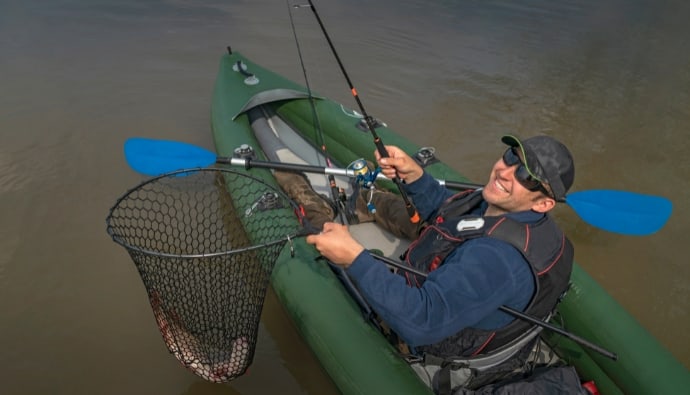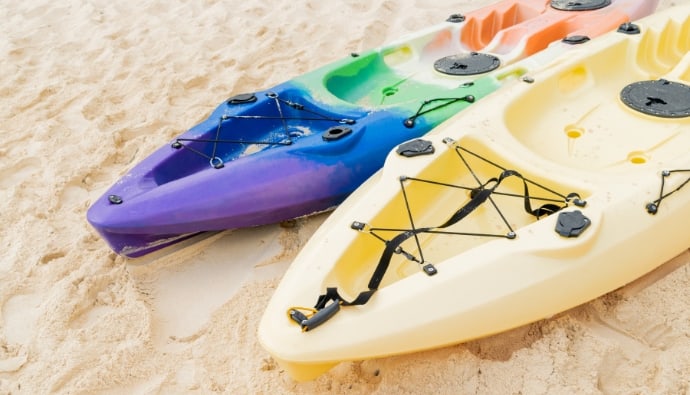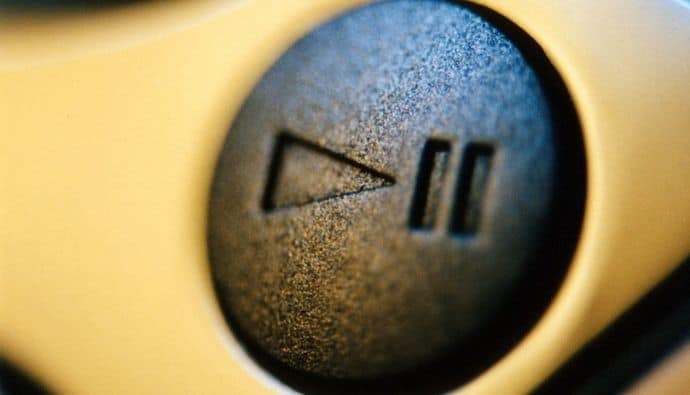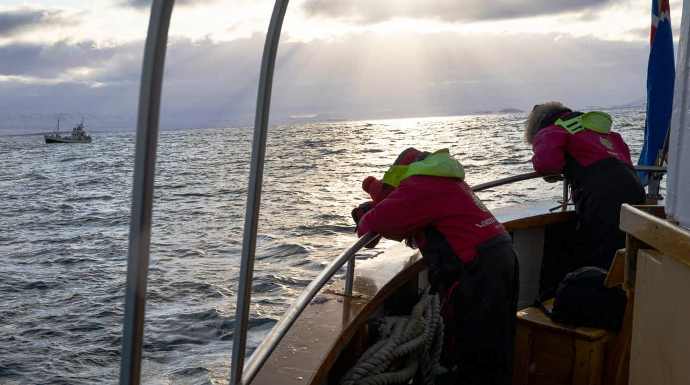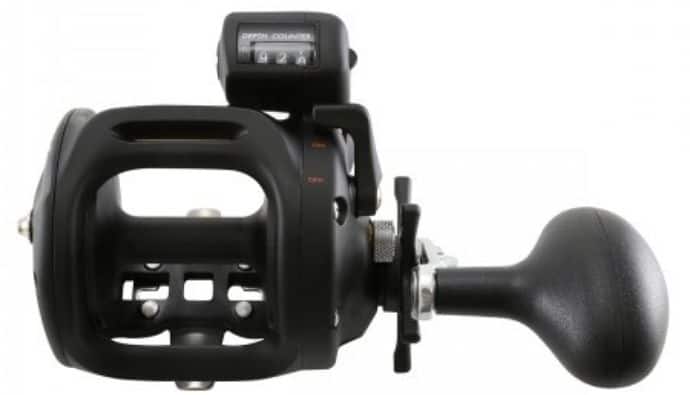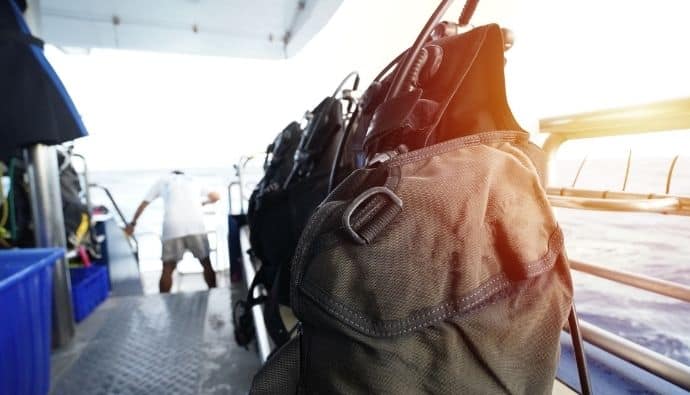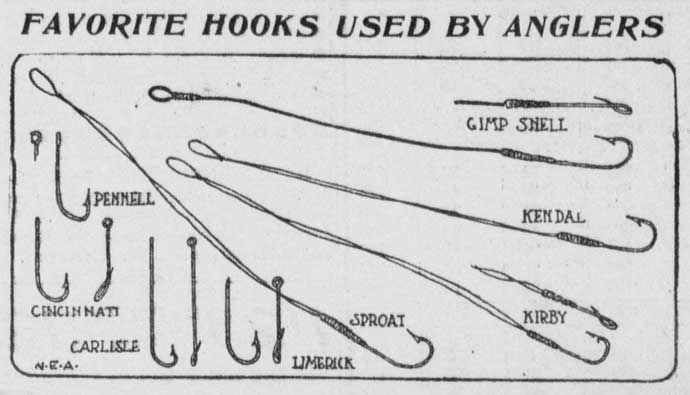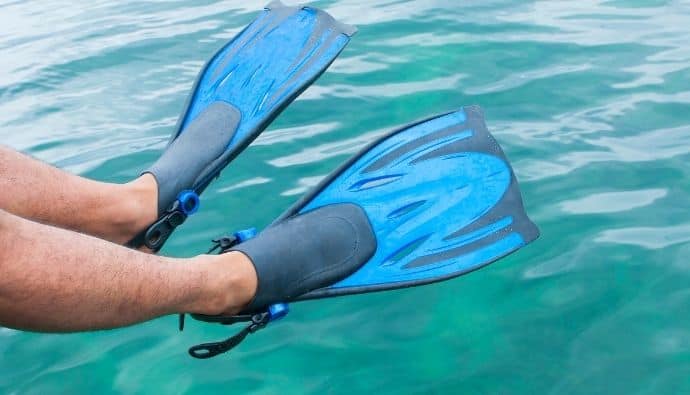Finding the best fish finder for the money can be a headache. There are so many models, brands, and features that it’s hard to know where to start.
We have done all of the research for you! Our reviews will help you make an informed decision about which fish finders are worth your time and money.
6 Best Fish Finders for the Money
- Most Affordable Fish Finder – ReelSonar Wireless Bluetooth Smart Fish Finder
- Easy to Use and High-Performing Fish Finder – Garmin Striker 4cv with Transducer
- Best Selling Yield-Driven Fish Finder – Lowrance HOOK Reveal Fishfinder
- Most Compact and Reliable Fish Finder – Garmin ECHOMAP CHIRP 43cv
- World’s Most Advanced Fishfinder – Garmin Striker 7SV with Transducer
- Most Precise Fishfinder – Humminbird 410210-1 HELIX 5 CHIRP GPS G2 Fish Finder
1. ReelSonar Wireless Bluetooth Smart Fish Finder
Most Affordable Fish Finder
Key Features
- Available on both iOS and Android
- Comes with rechargeable batteries
- Offers iWatch and Google Watch compatibility
- Has contour structure mapping and waterbed features
The ReelSonar Wireless Bluetooth Smart Fish Finder is a high-performance and handy device that can be used as a remote fish finder or as a bobber with its two snap swivel connections.
It is easy to set up and use. It can locate and depth probe fish, making it perfect for fishing.
When deciding on the best fish finder for the money, battery life is the most important thing to consider.
ReelSonar has designed this 10-hour fish finder for those who want their fish finder’s power to last for a long time. It has all the features that you would expect from a quality device.
2. Garmin Striker 4cv with Transducer
Easy to Use and High-Performing Fish Finder
Key Features
- The user interface has a 4.3 inches display
- Its rugged design is suitable for any fishing environment
- Built-in contour mapping software that creates and stores maps
- With built-in GPS to track small boat speed and locate different routes
Garmin provides an advanced tool that can easily navigate on the edge of the water. This device functions as a GPS receiver, allowing you to see your location, gauge your distance to other boat maps and map out an ideal course.
It uses advanced active imaging fish finder technology that takes the guesswork out of targeting fish. The transducer is then paired with a Garmin ClearVü scanning sonar. Combined, these provide stunning images of what’s below your boat.
3. Lowrance HOOK Reveal Fishfinder
Best Selling Yield-Driven Fish Finder
Key Features
- Has sonar coverage twice that of other fishfinders
- With optimized keypad for easy access to features
- Equipped with improved fish-finding color palettes
This Lowrance Fishfinder allows you to find fish and other marine life in deep waters by utilizing sonar to detect the subtle differences in the appearance and location of underwater objects, enabling you to determine their exact location and depth.
The simple and optimized keypad and interface will allow users to have an easier time navigating the fish finder features.
The GPS of this fishing device is ready to help you find fish close by. You can rely on Hook Reveal with its real-time tracking capabilities, automatically linking your location with the map.
4. Garmin ECHOMAP CHIRP 43cv
Most Compact and Reliable Fish Finder
Key Features
- Has a mount with quick-release for efficient mobility
- CHIRP ClearVü scanning sonar can capture high-quality images
- With preloaded LakeVü g3 map that can cover up to 20,000 lakes
The Garmin ECHOMAP CHIRP 43cv offers a compact and lightweight design for those who prefer their navigational aids to be as small as possible.
It uses a built-in MicroSD card, so you can update its maps using this way. You can also install additional map packages from the Garmin microSD card.
This portable fish finder is compatible with most transducers on the market without needing specific hardware or software. You may mount it on your trolling motor so that you can take your adventures anywhere.
5. Garmin Striker 7SV with Transducer
World’s Most Advanced Fishfinder
Key Features
- Equipped with highly sensitive GPS
- Wi-Fi connectivity to ActiveCaptain fishing app
- With a transducer for the built-in ClearVü and CHIRP SideVü sonars
- All new solar palettes allow to detect of fish and other structures easily
This Garmin Fish Finder is the most advanced Fishfinder in the market. With the help of the clearvü and traditional CHIRP sonar, you can easily track your boat’s speed. You can also track the location of the boat’s engine and other accessories.
Its Quickdraw contour maps are very detailed, allowing you to plan your fishing trips with the confidence of knowing where you are fishing.
It is perfect for any angler because the larger screen makes it easy to read even in direct sunlight, and the brighter, more visible display gives you a great view of what’s going on below.
6. Humminbird 410210-1 HELIX 5 CHIRP GPS G2 Fish Finder
Most Precise Fishfinder
Key Features
- With dual spectrum CHIRP
- CHIRP sonar to reach greater water depths
- Down imaging sonar allows a clearer vision in the water
- The base map contains over 10,000 lake charts and U.S. coastal coverage
- Side imaging sonar (CHIRP) to filter out the noise and opt for a clearer view
The Humminbird Fish Finder is a great kayak fish finder that offers you a vision up to 1500 feet during good conditions with CHIRP sonar.
On the other hand, the side-scan sonar can provide clear vision up to less than 300 feet and create customized maps. Moreover, it is commonly used for kayak fishing.
This product is among the best fish finders that have a wide range of sonar frequencies. It easily detects fish and other structures. Furthermore, it has built-in charts, a GPS fish finder, side imaging and down imaging, and a flasher perfect for ice fishing.
Conclusion
Today’s new high-quality fish finders manufacturers combine the most advanced sonar technology, down imaging and side imaging, and fishfinder GPS combo with state-of-the-art electronics.
This combination of high-quality technology enables skilled anglers to find good fishing locations quickly and easily catch fish.
Modern fish finders are affordable, easy-to-use devices that help anglers get the most out of their fishing trip. They provide a fishing experience that’s both enjoyable and productive.
We hope this article helped you find the best fish finder for the money. Don’t forget to use this article as a guide when you’re in the store. Good luck and happy fishing!



 Facebook
Facebook YouTube
YouTube